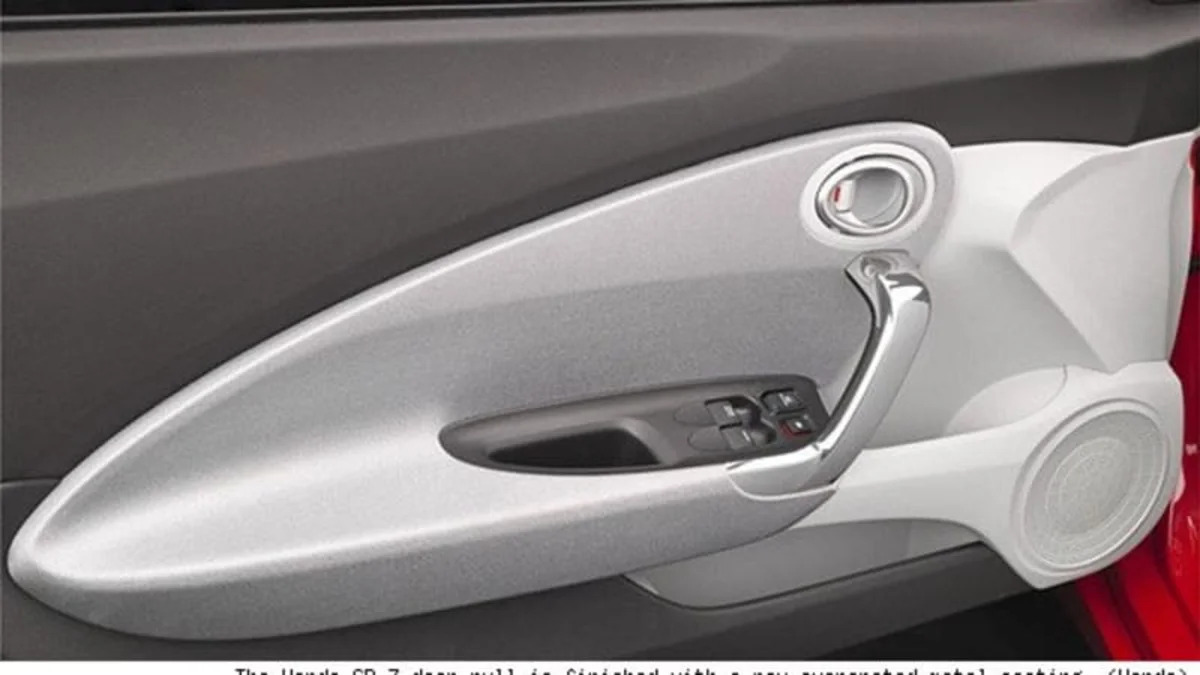
According to Michael Warsaw, VP of Design for automotive supplier Johnson Controls, decorative materials and finishes in today's vehicle designs go "way beyond leather, plastic and faux wood." And there's much wider variety in the materials and finishes coming into play for the instrument panels, door handles and other parts of car interiors that are currently under development for model year 2014 and beyond, than in the previous generations.
One cutting edge example can be found in the Honda CR-Z hybrid, where an evaporated metal coating dressed up the center stack and door grips. The evaporated metal is sandwiched between an adhesion layer and a clear glossy top layer, with the whole piece applied under vacuum.
According to Honda, this means it can create a metal-like look and feel, without the design constraints presented by actual metal. This allows for more complex contours, and compared to conventional film coatings, says Honda, the evaporated metal affords more durability.
Several factors are driving innovation in this area of vehicle design. To start, tighter fuel economy standards going into effect in 2016 have upped the ante for lighter weight materials.
"Efficiency is something people think about all the time now with vehicles," said Warsaw, who also mentions growing awareness around environmental issues and increased appreciation for natural-looking surfaces helping to spur "a movement toward more honest materials."

Interior components that typically would be covered with vinyl and other materials can be coated in a way that lets the texture of the underlying wood pulp and other fibers show through, creating a different aesthetic while eliminating the extra layers of material to shave off some weight.
While Warsaw is bully on such developments, he admits that achieving this look is more complicated than skipping a couple steps in the finishing process, as typically those natural fibers have been covered for a reason. UV exposure and general wear and tear can be problems. Even with new coatings, this approach means there's slight variation from car to car.
Historically, said Warsaw, the goal has often been to have each vehicle that comes off the line looking identical to the one before. Prizing the variability of a finish, he said, reflects a whole different way of thinking about what constitutes a finished surface.
Another new way of thinking comes in deciding which type of vehicles new materials are appropriate for. In the past, new high-tech finishes often appear in higher-end models first. But when it comes to some of these new interior materials, Warsaw says that automakers are being more adventurous with their smallr and lower-cost cars such as the Kia Soul and Ford Fiesta, or the CR-Z, which Honda hopes will exemplify "premium small."


Sign in to post
Please sign in to leave a comment.
Continue